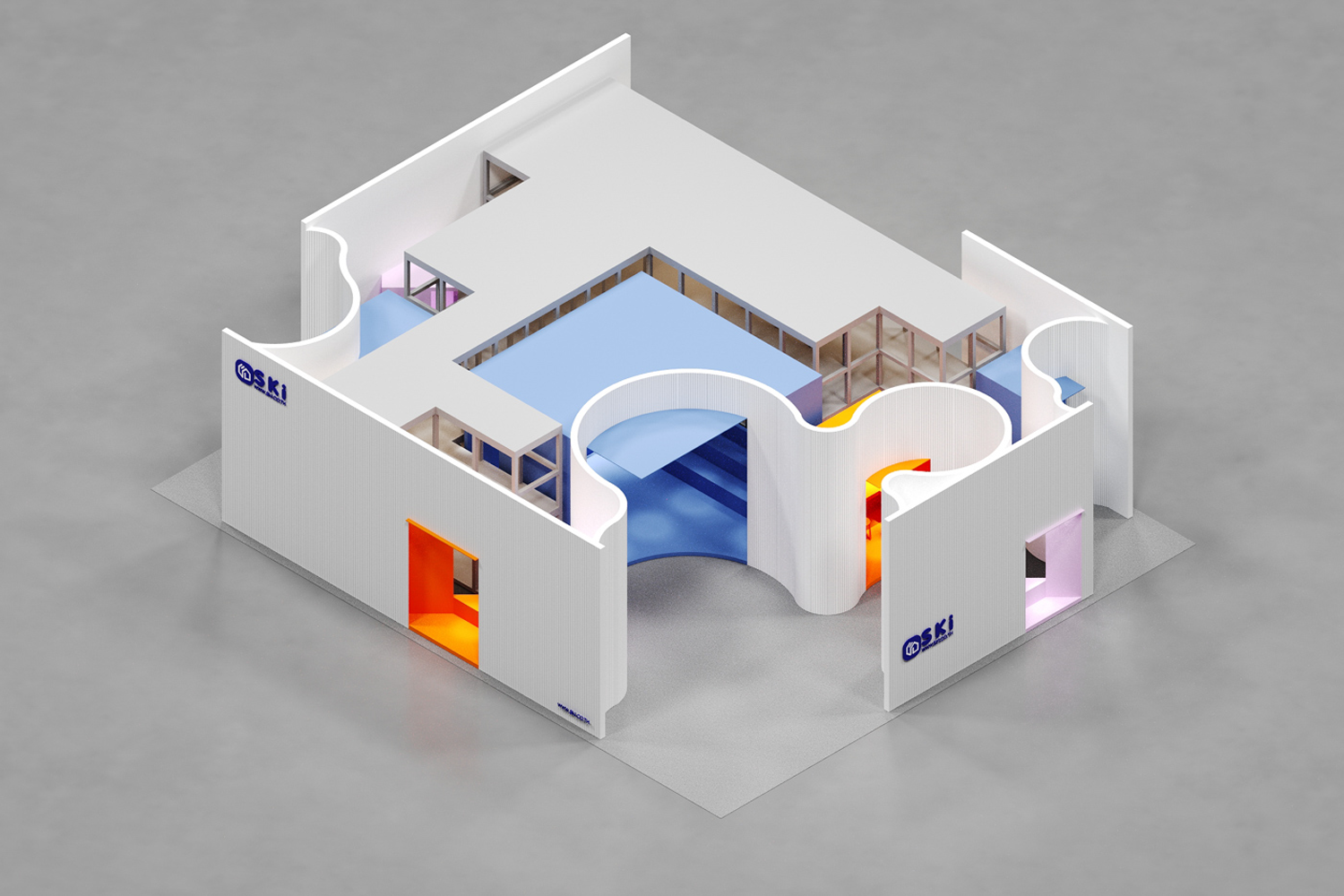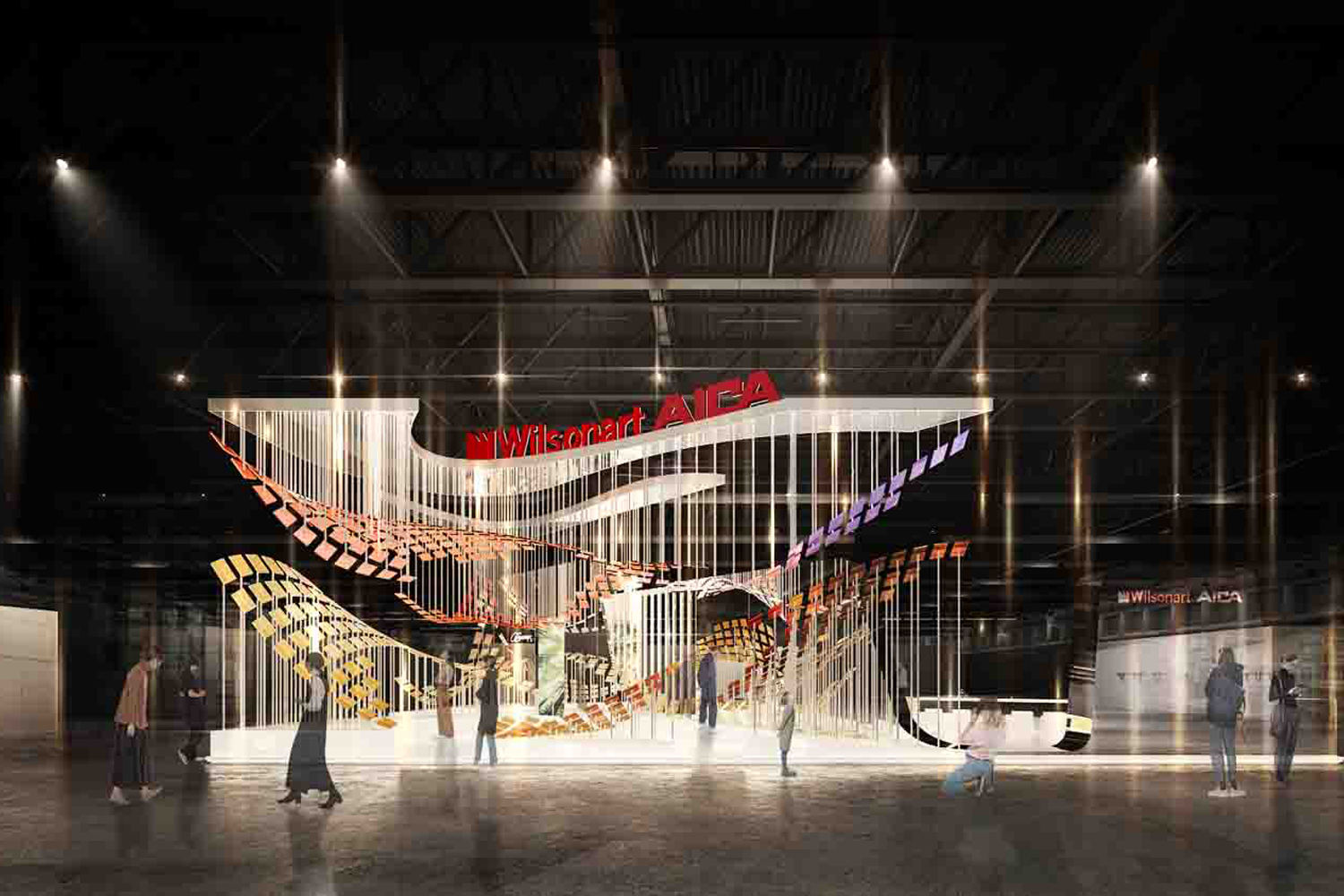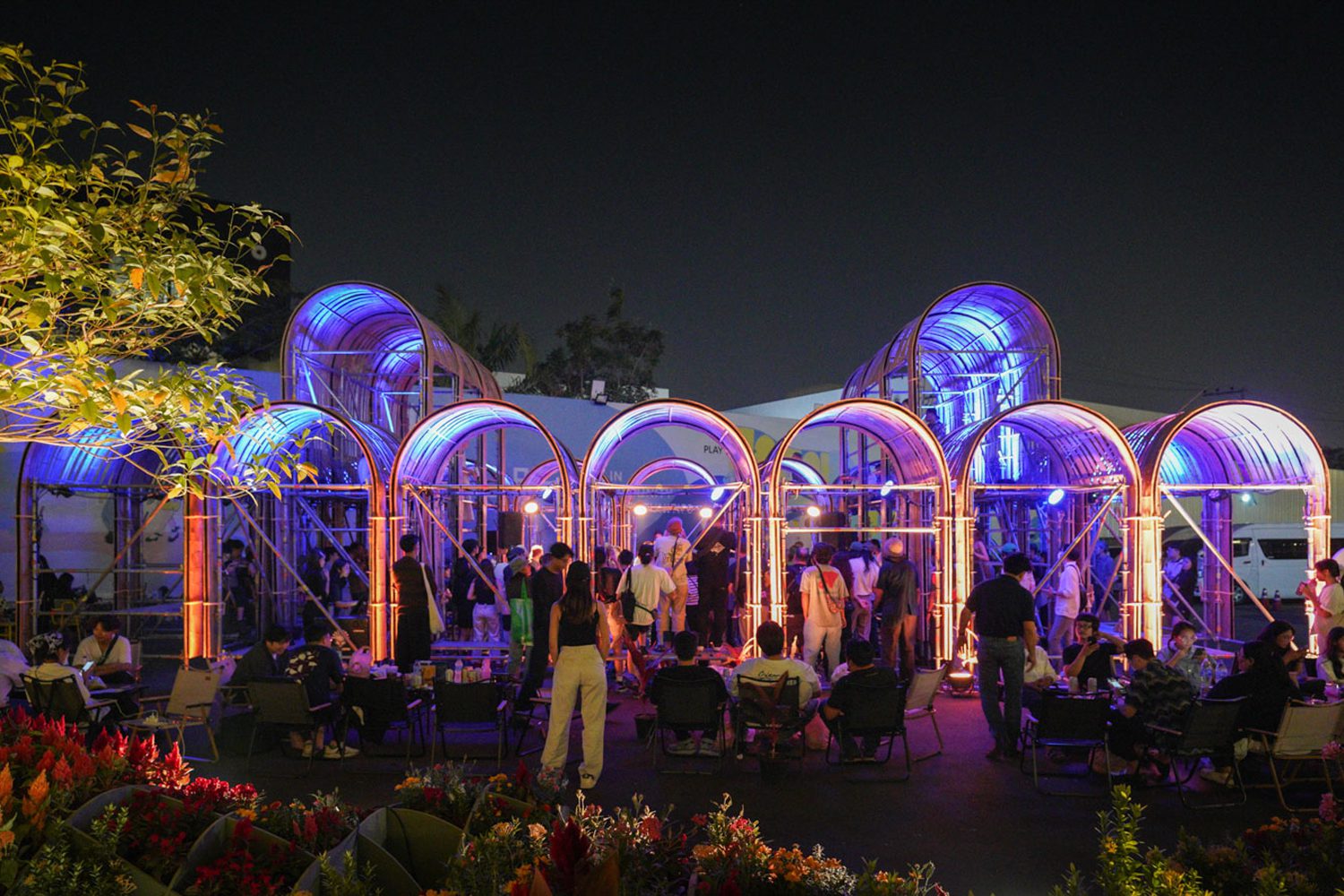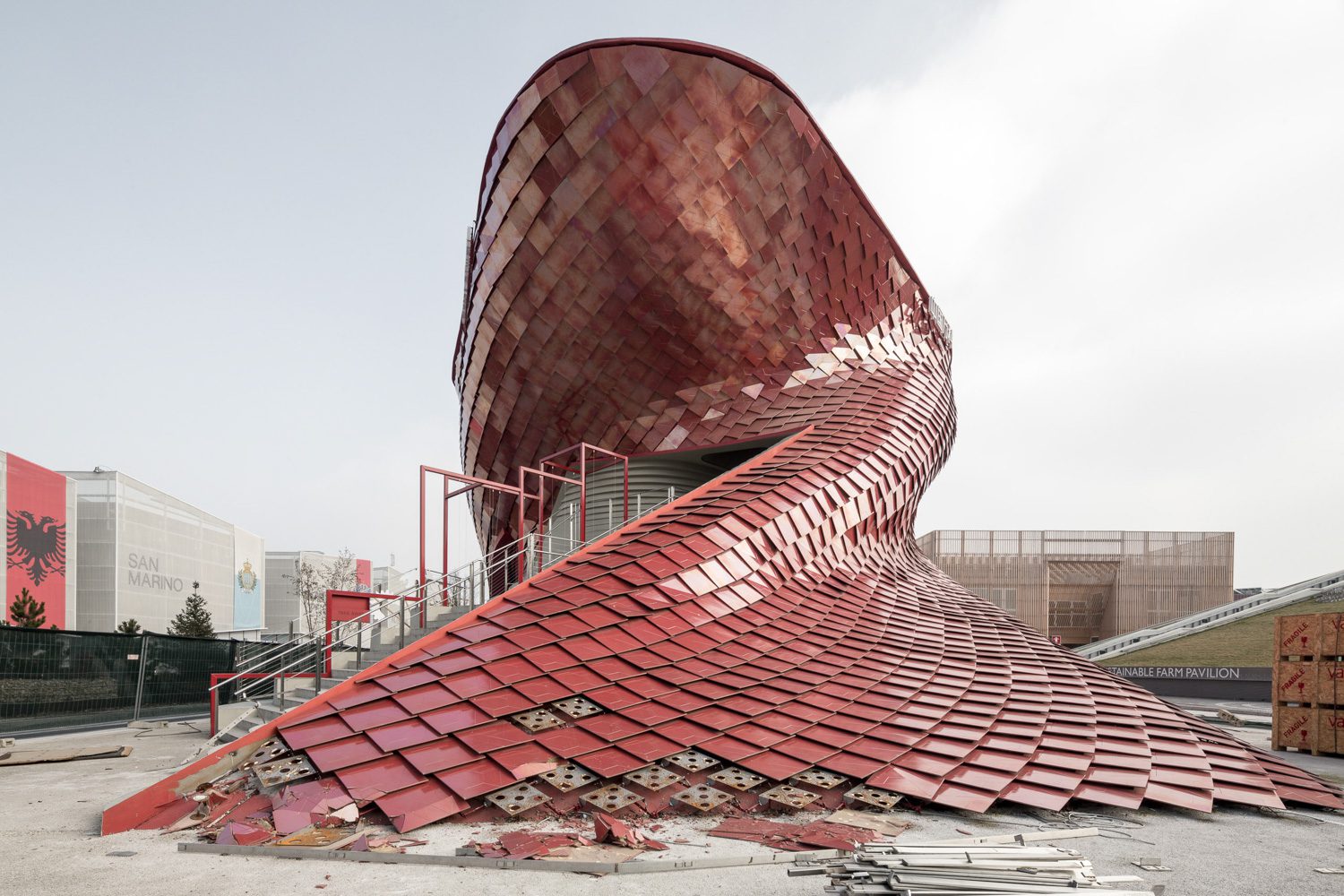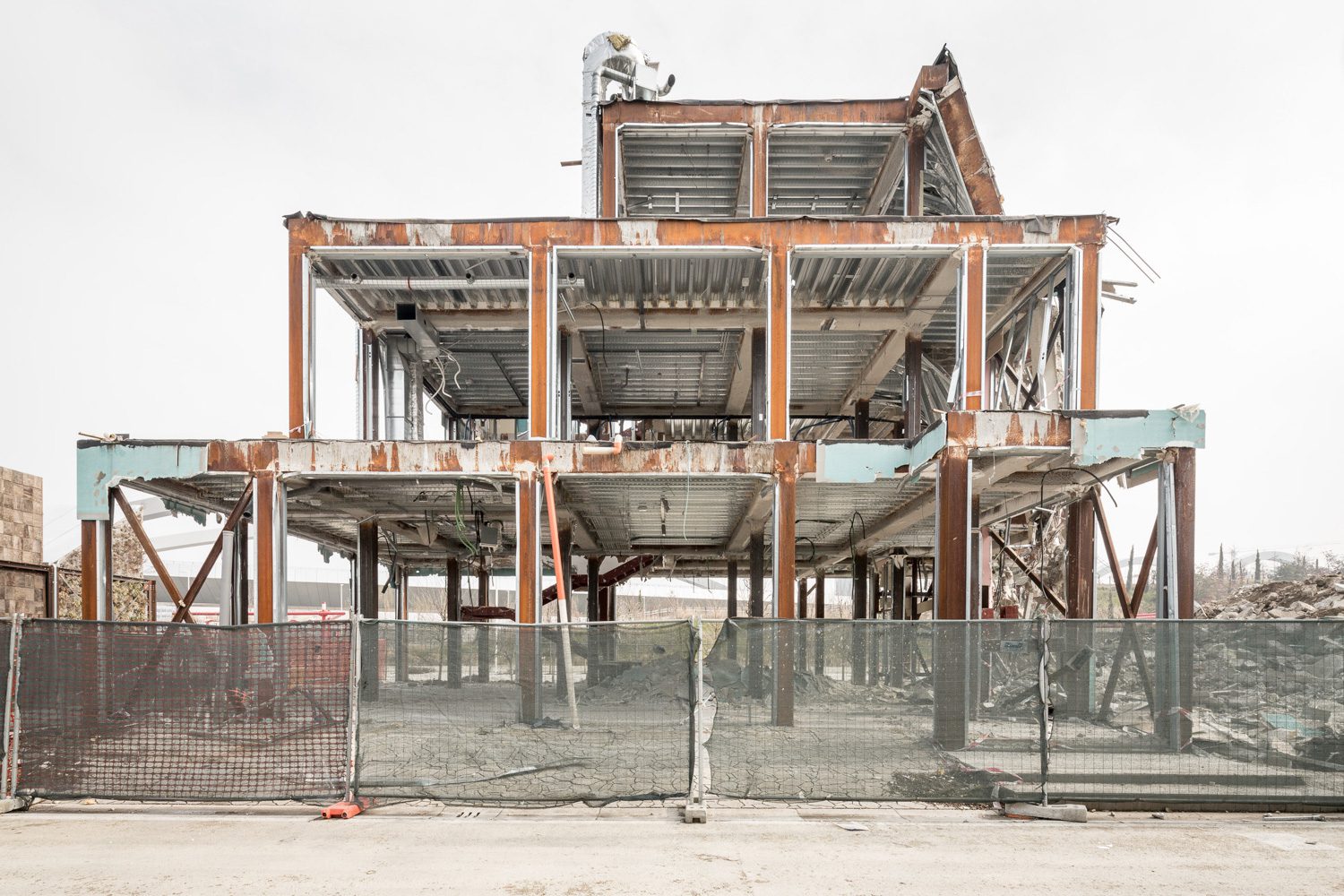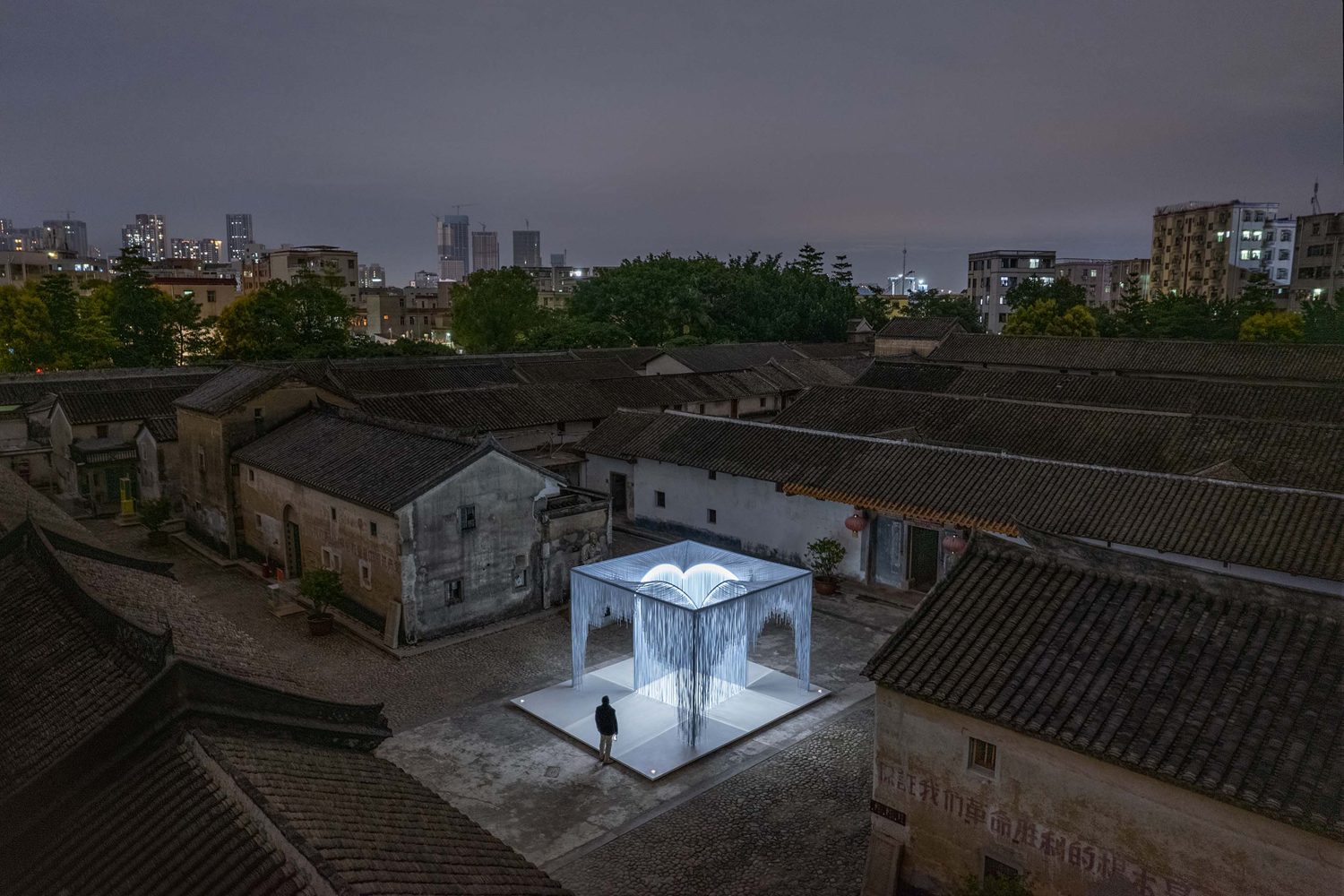Tag: pavilion
THEMATIC PAVILION: SKI X ANONYM STUDIO
SKI, THE CONSTRUCTION EQUIPMENT IMPORTER AND DISTRIBUTOR, HAS PARTICIPATED IN THE THEMATIC PAVILION IN ARCHITECT’ 24, DISPLAYING ITS WAREHOUSE-LIKE INSTALLATION DESIGNED BY ANONYM STUDIO
THEMATIC PAVILION: WILSONART X PBM
THE THEMATIC PAVILION OF WILSONART DESIGNED BY PBM IS ONE OF THE HIGHLIGHTS AT ARCHITECT’ 24. THE DYNAMIC WAVE-LIKE PAVILION AIMS TO REPRESENT A DIVERSITY OF WILSONART PRODUCTS
THEMATIC PAVILION: S-ONE X HAS DESIGN AND RESEARCH

Photo courtesy HAS design and research
ONE OF THE THEMATIC PAVILIONS IN ARCHITECT’ 24 BY HAS DESIGN AND RESEARCH REPRESENTS THE NEXT STEP OF S-ONE, A MANUFACTURER AND DISTRIBUTOR OF ALUMINUM PROFILES, AND A SMART IDEA OF MATERIALS ADAPTATION FOR CREATING SPACE
SKY MOUNTAIN
DESIGNED BY SOU FUJIMOTO, ‘SKY MOUNTAIN’ IS A PAVILION IN THE PAVILIONS BY THE SEASIDE THAT BRINGS WAVES, MOUNTAINS, AND HUMANS TOGETHER AND TRANSFORMS HAIKOU BAY INTO ‘THE NEW CULTURAL DESTINATION’
SC ASSET x BANGKOK DESIGN WEEK 2024
LOOK BACK AT THE VIBRANT ACTIVITIES BY SC ASSET AND THE CAPTIVATING BAMBOO MACHE MODULAR BY THOR.KAICHON ARCHITECTURE THAT ADDED VIBRANCY TO THE KASETSART – BANG BUA AREA DURING BANGKOK DESIGN WEEK 2024
PLERN-PHLIO-TIL-CHAN
WITH A LIMITED BUDGET, TIME, AND NUMBERS OF LABOR, EXPLORE HOW THE DESIGN FROM THE VOLUNTEER CAMP PROJECT ORGANIZED BY SILPAKORN UNIVERSITY ‘PLERN-PHLIO-TIL-CHAN’ HAS BEEN DEVELOPED THROUGH THE YEARS
MEDITERRÁNEO
MANUEL BOUZAS UTILIZES ‘BLINDS’ AS A ROOF WITH HIS PAVILION ‘MEDITERRÁNEO’ WHICH BRINGS THE QUIET PLAZA OF VALENCIA IN SPAIN BACK TO LIFE DURING THE TAC! URBAN ARCHITECTURE FESTIVAL 2023
PHOTO ESSAY : EXPO DISMANTLING
TEXT & PHOTO: FILIPPO POLI
(For Thai, press here)
I started attending Expo Milano in February 2015, less than 3 months before the opening date.. The site looked like an anthill amidst traffic jams of trucks and thousands of workers; I had never seen such a large and complex construction site due to the number of projects being carried out simultaneously.
The big canopies of the Decumano were already there, the pavilions were starting to grow, almost all of them built in dry construction to speed up the assembly process; some countries were erecting their structure very quickly and for others it seemed that only a miracle would help them to finish on time.
The entire site was under police control because of threats of demonstrations and riots by the notorious black blocs, but walking towards the control turnstiles there were “zones of condescension”: a queue of immigrants who every morning waited outside the fences to be hired by the day. The organisational system had collapsed and the informal economy was the only option for getting the work done. In the last phase before the opening, make-up professionals – trade fair and TV set installation companies – joined the construction companies to disguise what was unfinished and make it ready for the official opening on 1 May 2015.
Twenty-one million visitors followed, and the press celebrated this success with triumphant articles about the rebirth of Milan and Italy.
The rules of the BIE stipulated that fourteen months after the end of the exhibition, the participating countries should return the apple as they received it and try to reuse the pavilion elsewhere. Not many virtuous ones managed to find a second location; unfortunately, the list of destructions is longer than the list of those pavilions dismantled and reused. However, Expo is slowly adapting to the times: the waste of an event of this scale is unacceptable and a strategy to avoid it is being considered.
Expo Milano ended in October 2015 and later this year its gates reopened to trucks and workers to dismantle the pavilions like a big jigsaw puzzle. I was able to access the site on two further occasions since it was closed to the public. After having seen the entire construction process and accompanied the months of the event’s development, a cycle closes, documenting the traces of what was there, and with them the metal-devouring machines, the saws and the patient labour of the workers sorting the materials.
Some pavilions seemed to have evaporated. In the earth were some traces of foundations and mud; others were lacerated, others looked as if they had been bombed but stood stoically.
Where a few months ago I struggled to find a good shooting point, I now walk alone along the Decumanus, a post-atomic landscape all around me. Volunteers rescued many plants, but the greenery that cannot survive without artificial irrigation was already dead and, in the meantime, the Third Landscape (G. Clement, 2004) has gained some space among the skeletons of structures and abandoned gardens. In this way, too, the Expo has its own charm.
The photographic series presented on these pages wants to raise some questions not only about architecture but also about our society and the meaning of these events.
_____________
Filippo Poli is a photographer specialized in architectural photography; he is based in Europe and collaborates with architecture firms, institutions and publishers.
His personal work is focused on cultural landscape, on the relationship between Man and Nature and its results in the Space.
His photographs are part of the permanent collection of the new Art Centre of Santander of public Enaire Foundation and his work has been presented in venues in Europe (Climate Summit (COP25) in Madrid, Venice Biennale, Arco Madrid, Photo España, Deutsches Architekturmuseum, …) and USA and are part of private and public collections.
He regularly publishes in the most important architecture magazines and his work has been awarded by Fundación Enaire, PX3, European Architectural Photography, Architekturbild, IPA, Photography Master Cup, Philadelphia Basho, ArchTriumph among others.
Filippopoli.com
facebook.com/filippopoliphotography
instagram.com/filippo.poli
FREEING FRAMEYARD
AMONG THE HISTORICAL SIGNIFICANCE VILLAGES FOR THE HAKKA IS A LIGHT-BLUE BOXY PAVILION BY HAS DESIGN AND RESEARCH THAT CONNECTS WITH THE HISTORY, COMMUNITY, AND CULTURES
Read More


